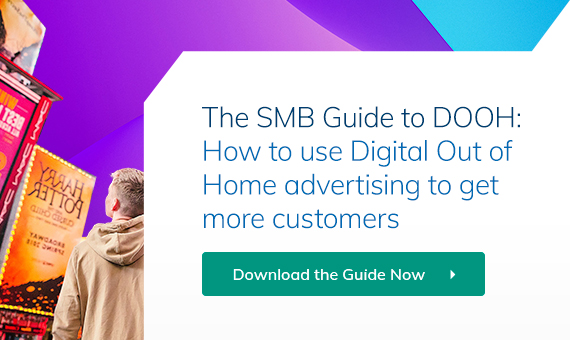In today’s fast-paced and hyper-connected world, advertisers face the challenge of capturing consumers’ attention amidst the constant barrage of information. Traditional advertising methods, while still relevant, may not always cut through the noise and deliver the desired impact. This is where Programmatic Digital Out-of-Home (pDOOH) advertising comes into play, revolutionizing the way brands connect with their target audiences in the real world. By incorporating personalized messages, pDOOH takes advertising experiences to new heights, delivering unforgettable and engaging campaigns.
Understanding Programmatic Digital-Out-of-Home (pDOOH) Advertising
Before diving into the power of personalized messages, it’s crucial to understand what pDOOH advertising entails. Traditional out-of-home advertising typically involves static billboards or posters with fixed content. In contrast, pDOOH uses digital displays, such as digital billboards, transit screens, and interactive kiosks, to showcase dynamic, real-time ads. These digital displays are connected to a central ad-serving platform that enables advertisers to update, target, and optimize content remotely.
The Rise of Personalized Messages in Advertising
With the abundance of data available today, personalization has become a fundamental aspect of advertising. Consumers no longer respond favorably to generic, one-size-fits-all ads; they crave relevant and tailored experiences. Programmatic DOOH allows advertisers to harness the power of data and technology to deliver personalized messages that resonate with specific audiences. By analyzing this data, advertisers can understand consumer behavior patterns and preferences, enabling them to deliver contextually relevant messages at the right time and place.
- Location-Based Targeting: Utilizing location data, the brand identifies areas with high footfall near charging stations, shopping malls, and urban centers, where their target audience is likely to be present. Digital billboards equipped with programmatic technology are strategically placed in these locations.
- Weather-Triggered Ads: Taking advantage of real-time weather data, the brand programs its DOOH campaign to trigger specific ads based on weather conditions. On sunny days, the digital billboards display messages like “Go Green in Style: Drive Our Electric Beauty Under the Sun.” On rainy days, the message switches to “Stay Safe and Dry: Experience Our Electric Car’s Exceptional Handling in Wet Weather.”

(Image source: clearcode.cc)
- Behavioral Targeting: The brand uses data from online platforms and websites to understand the interests and preferences of their potential customers and eventually target audiences with precision. Such data include: age, gender, interests and past behaviour. Each segment can then receive customized ad content that sparks directly to their needs and desires. For example, a sportswear brand can target sports enthusiasts with ads featuring the latest athletic gear while simultaneously showing fashion-conscious individuals the brand’s trendy athleisure collection.

(Image source: jcdecaux-cityscape.hk)
4. Interactive Engagement: To take personalization to the next level, the brand sets up interactive kiosks in shopping centers. These kiosks allow consumers to customize the car’s color, interior features, and additional options, right on the spot. Users can see their personalized vehicle configuration displayed on a large digital screen, making the experience immersive and memorable.
5. Time-Sensitive Offers: To create a sense of urgency and drive sales, the brand includes time-sensitive offers in its programmatic DOOH campaign. Using real-time data, the digital billboards display countdowns to limited-time discounts or promotions, encouraging potential buyers to take immediate action.

(Image source: everymomentcounts.no)
Real-Time Optimization and Agility
The dynamic nature of programmatic DOOH enables real-time optimization and agility. Advertisers can react swiftly to changing conditions or events, adjusting their ad content accordingly. For example, a beverage company can increase advertising for ice-cold drinks on a scorching hot day, responding directly to the current weather. Such nimbleness allows brands to stay relevant and create meaningful connections with consumers in the moment. Moreover, to maximize the campaign’s impact, the brand incorporates geotargeting based on the location of each digital billboard. For billboards near beaches or parks, the ad content might emphasize the drink’s suitability for outdoor activities and relaxation.
Measuring Effectiveness and ROI
As with any advertising campaign, measuring effectiveness and return on investment (ROI) is critical. Programmatic DOOH provides robust measurement capabilities, allowing advertisers to track impressions, interactions, and other key performance indicators. By analyzing campaign data, advertisers can refine their messaging strategies and optimize future campaigns for even greater impact.
Say for example a prominent fashion retailer launches a programmatic DOOH campaign to promote its latest clothing collection and drive foot traffic to its stores. To measure effectiveness and ROI, the retailer analyzes foot traffic data around digital billboard locations, tracks conversions with exclusive QR codes, monitors social media engagement, analyzes website traffic and online sales, gathers post-campaign feedback from customers, conducts a cost-per-action analysis, and employs incremental sales analysis. These comprehensive insights help the retailer make data-driven decisions to optimize future campaigns, allocate budgets more efficiently, and fine-tune advertising strategies for even greater results, ensuring continuous improvement and driving business growth.

(Image source: creativepool.com)
Programmatic Digital Out-of-Home advertising has disrupted the advertising landscape, offering brands unparalleled opportunities to engage consumers with personalized messages. By harnessing the wealth of data and technology available today, advertisers can create unforgettable advertising experiences that resonate with audiences and drive meaningful connections. As we venture further into the digital age, personalized programmatic DOOH is poised to remain at the forefront of advertising innovation, shaping the way brands communicate with the world.
Get Started with Programmatic DOOH Today
With The Neuron, your campaigns can be created and run via single-click processes on a dashboard that’s easy to use and navigate. You can then use the platform to track your campaign and view in-depth analytics so you can adjust and optimize in real-time.
It couldn’t be easier to get started with programmatic DOOH. Start now!


